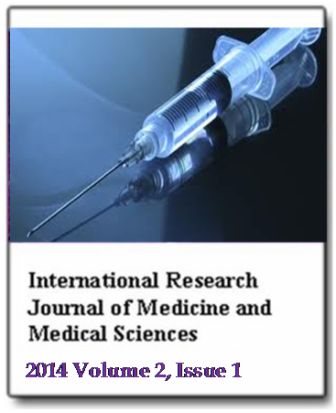Soil transmitted helminth infections among primary school children in Ile-Ife Southwest, Nigeria: A cross-sectional study
Ojurongbe O, Oyesiji KF, Ojo JA, Odewale G, Adefioye OA, Olowe AO, Opaleye OO, Bolaji OS and Ojurongbe TAInternational Research Journal of Medicine and Medical Sciences
Published: February 11 2014
Volume 2, Issue 1
Pages 6-10
Abstract
Helminths are the most common infectious agents of humans in developing countries producing a global burden of disease that exceeds conditions like malaria and tuberculosis. A study on the prevalence of Soil Transmitted Helminths (STH) infections and its effect was studied among primary school children aged 3 to 14 years in Ile-Ife, Osun State, Nigeria. Fecal samples of 162 (80 male and 82 female) pupils from primary school were microscopically investigated for STH. In all, 75 (46.3%) were positive for one STH while 2 pupils (1.2%) had double infection. Six STH were recorded in this study namely: Ascaris lumbricoides 59 (36.4%), hookworm 9 (5.6%), Strongyloides stercoralis 6 (3.7%), Teania spp. 2 (1.2%), Schistosoma mansoni and Hymenolepis nana 1 (0.6%) each. The intensity of infection based on the number of egg in 1 g of stool was categorized into severe, moderate and heavy infection. None of the children had heavy infection while 44 (27.0%) of those infected with A. lumbricodes had light infection and 7 (4.3%) had moderate infection. No significant difference was observed when the mean weight and height of infected and non-infected pupils were compared. The wide spread infection among the pupils is attributed to poor hygienic condition and the low socioeconomic status of these communities. The low intensity recorded is an indication that with more coordinated control efforts the parasites can be eradicated. Education on proper hygiene habits and regular de-worming exercise especially at the primary school level is recommended.
Keywords: Soil transmitted helminths, epidemiology, school children, Nigeria.
Full Text PDF
